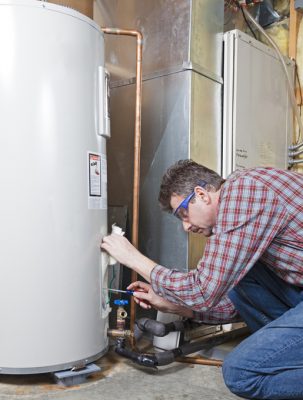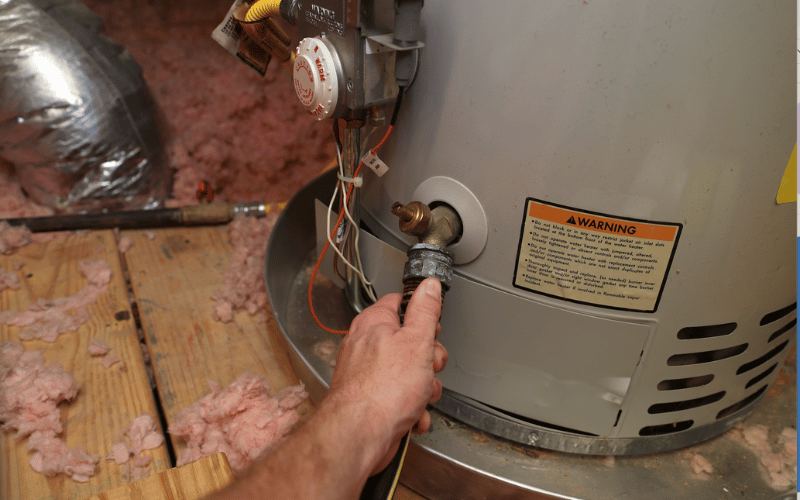Steps to Successfully Maintain Your Home's Hot Water SystemEffective Strategies for Caring for Your Home's Hot Water System
Steps to Successfully Maintain Your Home's Hot Water SystemEffective Strategies for Caring for Your Home's Hot Water System
Blog Article
This post below about How to Maintain a Hot Water Heater in a Few Simple Steps is incredibly entertaining. Read it for your own benefit and figure out what you think about it.

Warm water is essential for day-to-day convenience, whether it's for a rejuvenating shower or washing dishes. To ensure your hot water system runs efficiently and lasts much longer, normal maintenance is key. This write-up gives functional pointers and understandings on exactly how to maintain your home's warm water system to prevent disruptions and pricey repair services.
Introduction
Keeping your home's warm water system might appear complicated, but with a couple of simple actions, you can ensure it runs smoothly for years ahead. This guide covers every little thing from understanding your warm water system to DIY upkeep tips and knowing when to call expert help.
Value of Keeping Your Hot Water System
Routine maintenance not just extends the life expectancy of your warm water system but likewise ensures it runs efficiently. Overlooking upkeep can lead to decreased efficiency, higher power costs, and even early failure of the system.
Indications Your Warm Water System Needs Maintenance
Understanding when your warm water system requires focus can prevent major problems. Keep an eye out for signs such as inconsistent water temperature, unusual noises from the heating unit, or corroded water.
Recognizing Your Hot Water System
Before diving into maintenance jobs, it's handy to understand the basic components of your hot water system. Normally, this consists of the hot water heater itself, pipelines, anode poles, and temperature level controls.
Monthly Maintenance Tasks
Regular regular monthly checks can assist catch minor problems prior to they escalate.
Flushing the Hot Water Heater
Purging your water heater removes sediment buildup, enhancing performance and prolonging its life.
Checking and Replacing Anode Rods
Anode poles protect against corrosion inside the storage tank. Checking and changing them when broken is essential.
Examining and Changing Temperature Level Setups
Adjusting the temperature setups ensures optimal performance and safety.
DIY Tips for Maintenance
You can carry out a number of upkeep jobs on your own to maintain your warm water system in leading problem.
Looking for Leakages
Frequently evaluate pipelines and connections for leakages, as these can result in water damages and greater expenses.
Testing Stress Relief Valves
Examining the pressure safety valve guarantees it functions appropriately and avoids excessive pressure build-up.
Shielding Pipelines
Shielding warm water pipelines minimizes warmth loss and can conserve power.
When to Call a Specialist
While do it yourself upkeep is advantageous, some issues require specialist expertise.
Complex Concerns Calling For Specialist Aid
Instances consist of major leaks, electrical problems, or if your water heater is consistently underperforming.
Regular Specialist Upkeep Perks
Professional upkeep can consist of comprehensive examinations, tune-ups, and making sure compliance with safety and security standards.
Conclusion
Routine maintenance of your home's warm water system is vital for efficiency, durability, and cost financial savings. By following these pointers and understanding when to look for expert help, you can make sure a reliable supply of warm water without unexpected interruptions.
How to Maintain an Instant Hot Water Heater
Before tinkering with your hot water heater, make sure that it’s not powered on. You also have to turn off the main circuit breaker and shut off the main gas line to prevent accidents. Also turn off the water valves connected to your unit to prevent water from flowing into and out of the appliance. 2. When you’re done, you have to detach the purge valves’ caps. These look like the letter “T” and are situated on either side of the water valves. Doing so will release any pressure that has accumulated inside the valves while at the same time avoid hot water from shooting out and burning your skin. 3. When the purge valves’ caps are removed, you have to connect your hosing lines to the valves. Your unit should have come with three hoses but if it didn’t, you can purchase these things from any hardware or home repair shops. You can also get them from retail stores that sell water heating systems. Read the user’s manual and follow it to complete this task properly. When the hosing lines are connected, open the purge port’s valves. 4. You should never use harsh chemical cleaners or solutions when cleaning your unit. Make use of white vinegar instead. It should be undiluted and you’ll probably use about 2 gallons. 5. Now flush your water heater. This task should probably take about 40 minutes. We can’t give you specific directions for this because the procedure is carried out depending on the type, model and brand of your heater. With that being said, refer to the user’s manual. 6. When you’re done draining the unit, you have to turn off the purge port valves again. Remove the hosing lines that you earlier installed on each of the water valves. Put the valve caps (purge port) back in their respective places and be very careful so as not to damage the rubber discs that are found inside these caps. 7. Now that everything’s back in place, check your user’s manual again to find out how to reactivate your water heating system. 8. Once it is working, turn one of your hot water faucets on just to let air pass through the heater’s water supply pipes. Leave the tap on until water flows smoothly out of it. https://www.orrplumbing.com/blog/2014/september/how-to-maintain-an-instant-hot-water-heater/

I discovered that page on How to Maintain Your Water Heater & Prolong its Life while doing a lookup on the web. Loved our blog posting? Please share it. Let someone else locate it. Thanks for going through it.
Click Report this page